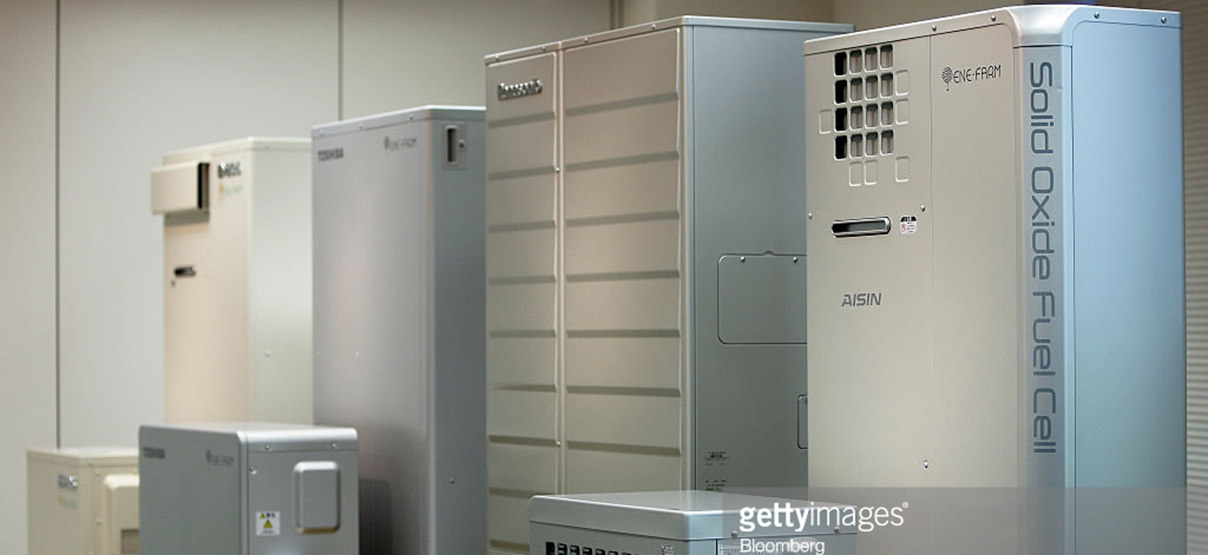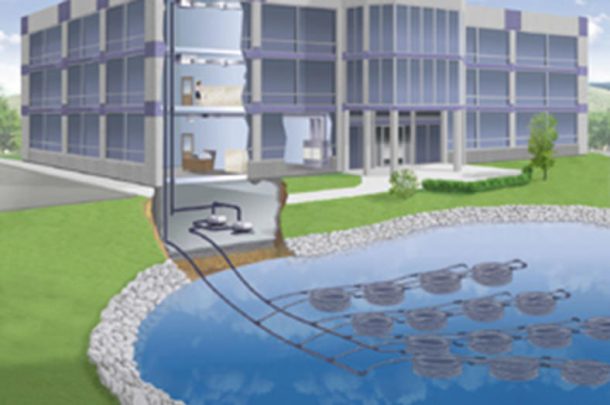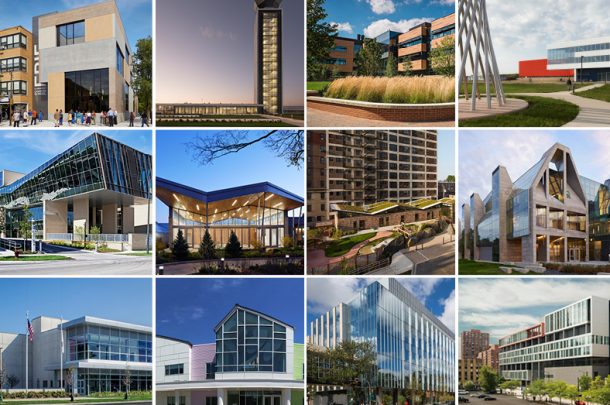
Fuel cell technology has been around since the 1800’s, but because of the complexity and high implementation cost, this technology has been slow to scale to a larger population. However, in the AEC industry we are seeing that more and more owners (and homeowners) are looking for new and innovative ways to be greener, leading designers to consider and fully understand these arising technologies. This article will review the basics of a fuel cell, as well as discuss its pros and cons to evaluate whether it is a viable and scalable option for this region.
A fuel cell is a device that produces an electric current directly from a chemical reaction between hydrogen and oxygen. It functions much like a battery except that it uses fuel and air to make an electrochemical reaction to produce power, whereas a battery uses a chemical stored in the cell that oxidizes and converts the chemical energy into electrical energy. Once the chemical energy “runs out” the battery needs to be replaced or if possible, recharged. A fuel cell on the other hand, will continue to operate as long as it has a proper supply of fuel and oxygen. This concept dates back to 1838 where a Welsh physicist named William Grove first introduced the fuel cell theory. However, the first stationary fuel cell wasn’t completed until 1959 by a British engineer named Francis Thomas Bacon. Expanding upon Bacon’s research, additional scientists and researchers from the United States further developed this technology and used their fuel cell design on the Apollo and Space Shuttle missions where they were used to generate power, heat, and drinking water. Since then, others have continued to further develop the technology and have opened up opportunities for different applications.
There are many different types of fuel cells being designed today, however the type that is tailor-made for buildings is the combined heat and power (CHP) type. In residential applications, the fuel for fuel cells is either natural gas or propane. The fuel cells contain a reformer that converts methane in the natural gas or propane to carbon dioxide and hydrogen. The hydrogen then reacts with oxygen from the air inside the fuel cell to produce electricity and heat (hot air and water).
As with all technology there are pros and cons to consider when looking at implementation. Some of these include:
The Pros:
- Clean – low emissions, mostly carbon dioxide with some NOx gas created after separating the hydrogen from the natural gas.
- Safe and efficient – there are very few moving parts.
- A reliable power supply (with proper constant fuel supply).
- Higher electrical efficiencies than normal combustion type generators.
- Excess power generated can be sold to the power company through net metering.
- Water can be used for heating.
The Cons:
- Units run on natural gas and propane, which are not renewable resources.
- High initial cost – roughly $50-$100/W installed.
- Will not provide enough hot water to replace a furnace unless multiple units are used (stacked).
- Will not provide enough power to get off the electrical grid unless multiple units are used (stacked).
- Short life span – Approximately 60,000 hours or 10-15 years if the unit is shut down at night when it is not needed, or about seven years if it is run 24/7.
- Due to the lack of city experience, permitting and inspections may take longer.
When deciding to purchase a system like a fuel cell, the owner usually looks at payback first. For example, a 700W fuel cell designed and manufactured in Japan, which is one of the only units available to homeowners, goes for approximately $17,000 plus installation. Currently ComEd charges approximately $.11/Kilowatt-Hour (KWH), and per the latest (2009) U.S. Energy Usage Administration’s survey, the average home in Illinois consumed approximately 11,000KWH of electricity per year. This would mean that the payback electrically would be about 14 years, not including installation costs and lower heating costs due to hot water generated by the fuel cell. The cost of this unit, and the fact that it will never pay for itself makes these fuel cells a poor option for the Chicago market. Although fuel cells are an emerging technology, the cost of the units are currently too high to consider installing in a Chicago home. However, as the technology progresses, and costs decrease, this system may one day become a financially viable option for homeowners.
References
- https://en.wikipedia.org/wiki/Fuel_cell
- “Fuel Cells: Promising, but struggling to catch on,” http://www.yaleclimateconnections.org/2016/11/fuel-cells-pros-and-cons/
- https://www.britannica.com/biography/Francis-Thomas-Bacon
- “Ene-Farms Use Hydrogen to Power Homes but Don’t Come Cheap,” https://www.bloomberg.com/news/articles/2015-01-15/fuel-cells-for-homes-japanese-companies-pitch-clean-energy
- https://www.eia.gov/consumption/residential/reports/2009/state_briefs/pdf/il.pdf







 Jason DeRosa Receives William P. Hogan Award
Jason DeRosa Receives William P. Hogan Award 







